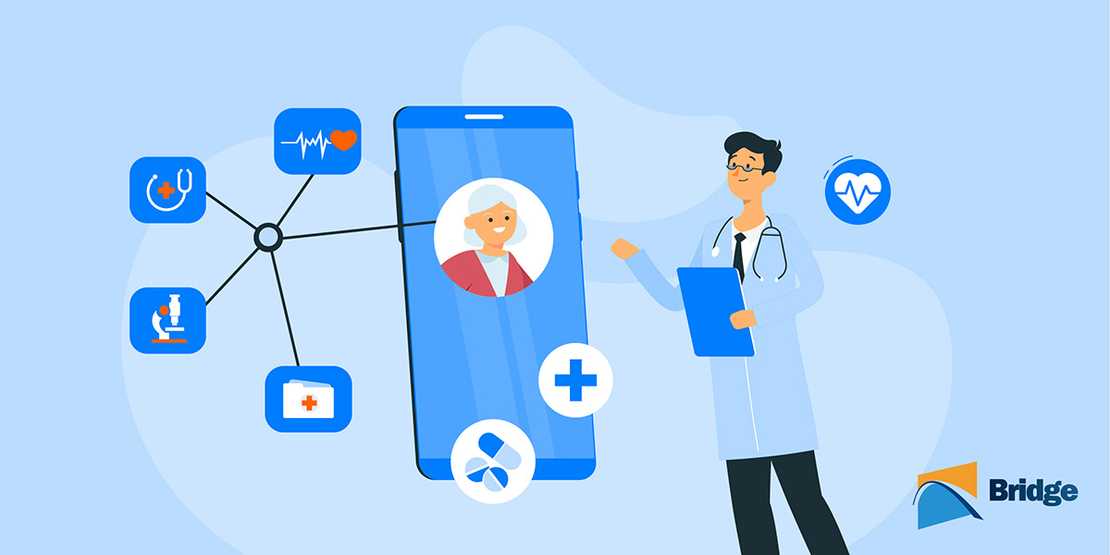Benefits of Telehealth Video Platforms in Chronic Disease Management
- Clement Baptiste
- May 14, 2021

Since mid-2020, telehealth video platforms have become increasingly widespread, enabling millions of people to access their primary care provider when they are unable to leave their homes. But now that doctor’s offices have resumed in-person appointments, will telehealth slip into the background? Having seen the positive impact telehealth has on patient populations and their expectations, it doesn’t seem likely.
A survey in July of 2020 revealed that 73% of doctors[¹] prefer using telehealth video platforms to care for their patients suffering from chronic conditions. Additionally, preliminary research[²] has suggested that the ability to access telehealth positively impacts patients with chronic disease by reducing the number of hospital visits.
Impact of Chronic Conditions on Healthcare
The Centers for Disease Control and Prevention (CDC) states[³] that managing chronic illness costs the healthcare system approximately $214 billion per year. Furthermore, an estimated 60%[⁴] of annual hospital visits are due to chronic conditions, but approximately 4.3 million of these visits are potentially preventable through more effective primary care services.
As a result, many healthcare companies are looking for a solution that lowers costs but does not compromise the quality of care for their patients.
Telehealth video platform benefits
Effective primary care services should include a telehealth video platform. Telehealth is a cost-effective way of managing chronic illnesses while reducing the need for in-house and emergency department visits. The platform ensures that the patient can remain in contact with their primary providers, fostering a continuity of care that benefits both the patient and the provider.
Telehealth also provides patients with an easy, low-risk way to share new symptoms with their doctors through HIPAA compliant SMS messaging, email, in-portal messages or phone calls rather than waiting until symptoms worsen before making an in-person appointment or visiting the emergency department.
Telehealth video platforms can also help solve the problem of geographical difficulties[⁵] that people in rural areas experience. According to a recent census, about 18% of Americans live in rural areas[⁶] where instances of chronic conditions tend to be higher[⁷]. Through telehealth, patients who cannot easily travel can have access to regular quality care and only have to travel when an in-house appointment is necessary.
Remote Patient Monitoring
Remote patient monitoring is a comprehensive way to monitor a patient’s symptoms in real-time by providing healthcare professionals important data such as blood pressure, blood glucose levels, and heart rate without the need for an in-person visit.
Remote patient monitoring has a positive impact on patients because they are empowered to take control of their healthcare while also building a more collaborative relationship with their providers. 57%[⁸] of patients would accept remote monitoring of ongoing health issues through at-home devices.
Digital Front Door
If the telehealth video platform is part of a comprehensive digital front door strategy, the patient will be able to manage many aspects of their care from a device of their choice. For example, patients can refill prescriptions, check lab results, and schedule telehealth and in-person visits. For clients with chronic disease, the ability to quickly access and track their health information from any location is greatly beneficial.
A comprehensive platform benefits physicians and creates a HIPAA compliant way to communicate with patients and store personal notes and logs to keep track of time spent with each patient.
Overall, telehealth video platforms are positioned to make a positive impact in the care of chronic disease. Healthcare companies can provide these services to their patients to improve the quality of care in a cost-effective way.
- Mitchell, H. (2021). What data reveals about the future of telehealth after the pandemic. [online] Becker’s Hospital Review. Available at: https://www.beckershospitalreview.com/telehealth/what-data-reveals-about-the-future-of-telehealth-after-the-pandemic.html
- HealthPayerIntelligence (2018). Payers Can Leverage Telehealth for Chronic Disease Management. [online] HealthPayerIntelligence. Available at: https://healthpayerintelligence.com/news/payers-can-leverage-telehealth-for-chronic-disease-management.
- Center, T.A.S.R.H.R. (2020). Texas A&M Health Science Center. [online] srhrc.tamhsc.edu. Available at: https://srhrc.tamhsc.edu/rhp2020/rhp2020-v1-download.html.
- Guthrie, M.(2019). Premier Inc. Identifies $8.3B Savings Opportunity in the ED with More Preventative and Coordinated Ambulatory Care. www.businesswire.com. [online] Available at: https://www.businesswire.com/news/home/20190207005636/en/
- CDC (2019). Health and Economic Costs of Chronic Disease. [online] Centers for Disease Control and Prevention. Available at: https://www.cdc.gov/chronicdisease/about/costs/index.htm.
- Hrsa.gov. (2021). Defining Rural Population | Official website of the U.S. Health Resources & Services Administration. [online] Hrsa.gov. Available at: https://www.hrsa.gov/rural-health/about-us/definition/index.html.
- www.ruralhealthinfo.org. (n.d.). Chronic Disease in Rural America Introduction – Rural Health Information Hub. [online] www.ruralhealthinfo.org. Available at: https://www.ruralhealthinfo.org/topics/chronic-disease.
- Accenture (2020). How Can Leaders Make Recent Digital Health Gains Last? [online] Accenture. Available at: https://www.accenture.com/_acnmedia/PDF-130/Accenture-2020-Digital-Health-Consumer-Survey-US.pdf.
